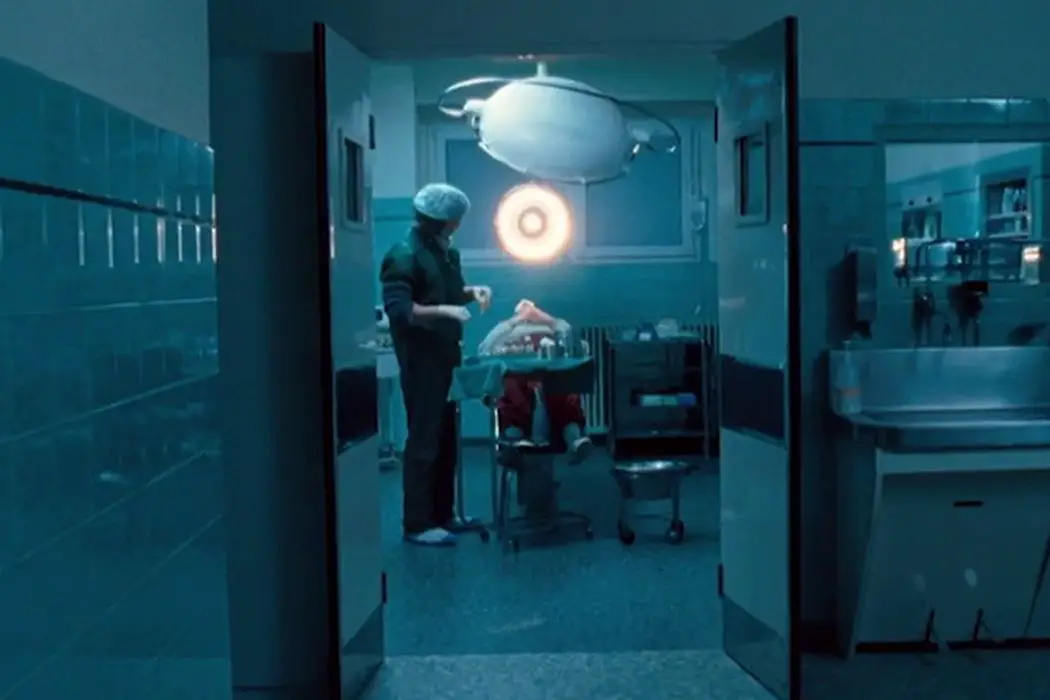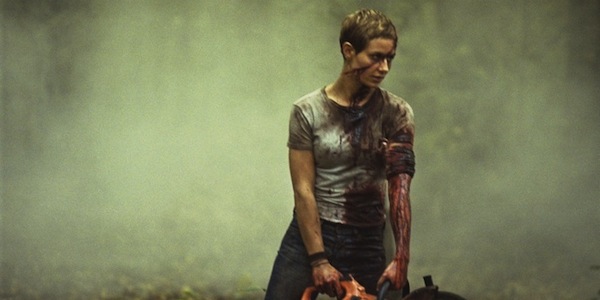Book Review: Alexandra West’s “Films Of The New French Extremity”

Michael Pementel is a Columbia College Chicago graduate of the…
While every country around the world has its own style and voice when it comes to film, there’s something fascinating in how each explores horror. Directors and writers around the globe have been using film for years to explore their country’s deepest pains and darkest moments. Guillermo del Toro explores the misery and violence of the Spanish Civil War through Pan’s Labyrinth; and Tobe Hooper provides a glimpse at economic/class struggles during America’s involvement in the Vietnam War through The Texas Chainsaw Massacre.
However, there is a country that many may not associate with a past of violence and suffering right off the bat: France.
If one had to think of a movie off the top of their head that made them think of France, a popular title might be Amélie; a picture that explores a young girl’s adventures through the lovely city of Paris, running about with laughter and love. France comes with immediate associations of romance, such as young lovers kissing atop the Eiffel Tower, or taking moonlit boat rides. What may not come to mind immediately, however, is the county’s horrific history of class injustice, racism, and violence. And when it comes to that history, there are no other set of films that dive as deeply into it as the New French Extremity.
In her latest book, Films of the New French Extremity: Visceral Horror and National Identity (McFarland), author Alexandra West explores these films, and the historical commentary and philosophy woven throughout them. The New French Extremity make for some of horror’s most repulsive, violent, and nihilistic works, with each picture revealing the underbelly of France. What these films have to share on screen is not always easy to view, but within all the depictions of pain and violence, they offer a well of history and philosophy that has the power to shake at the core of viewers.
In the book, West dives into each film of the New French Extremity, examining each work on a narrative and filmmaking level, while also looking at the historical context behind them. Each chapter brings forth a well of academia that has the ability to open people’s minds, offering an insight that will allow them to look deeper into these films.
A History Of Pain And Injustice
West’s love for horror and history are entwined in her life, and have greatly inspired her. She shares:
“I’ve loved horror ever since I was a kid and it scared the crap out of me. I gravitated towards the academic aspect of it in my early teens when my sister picked up a second hand copy of The Dread of Difference: Gender and the Horror Film on a whim. Even though I didn’t understand many of the concepts in the book, it compelled me to think deeply about the films I was consuming and my relationship to them.
From there I read more and more and took some film classes in my undergrad. By the time I had completed my Master’s degree in Theatre, I decided to leave Theatre in the dust and focus on my love of horror films and apply what I had learned through my academic career to film while also reading as much as I could on film theory to fill in the gaps.”

Upon discovering the New French Extremity, West felt a sincere connection to the films; a sense that there was something truly profound within the stories that needed to be further explored. In discovering these films, West shares, “I didn’t really start investigating New French Extremity until around 2011 or 2012. I was hit with a double whammy of Martyrs and Inside and couldn’t stop thinking about the films, they felt like necessary chaos. And there were so many more films of the same ilk coming from the same country which fascinated me. I began to read more think pieces about them and began to put my two cents in first with a lecture at Toronto’s Black Museum Lecture series and an article in Offscreen Film Journal.”
She continues, “There is a lot of great academic writing about New French Extremity, but I wanted to read something that bridged the gap between the art-house movement and the horror movement while examining the reality of France. I couldn’t find anything like that to read so I decided to write a book on it.”
Films of the New French Extremity opens with West providing a look into France’s history. She goes over years of the country’s corrupt political system, class discourse, and violent nature. This introduction does an outstanding job pulling the rug out from under readers, distancing them from the romantic Hollywood-esque vision we’ve been sold of the country. West goes over everything from The French Revolution, World War 2, and more contemporary issues such as racism and homophobia.
From there she provides a look into France’s film history, discussing how the country’s filmmakers laid out the groundwork for the medium’s innovation and artistry. It’s after these two chapters that the book begins to examine each film of the New French Extremity.
An Intricate Outlining of Theatre And History
In conducting research for the book, West says, “It was emotionally draining to not only watch the films, but also to think and write about them.”
The book explores a variety of films, including everything from I Stand Alone (1998) and In My Skin (2002), to more popular titles such as High Tension (2003) and Martyrs (2008). Together the book makes for 14 chapters, covering 23 films of the New French Extremity (along with other films influenced by the movement).

West does a terrific job discussing each film, collecting them in groups by chapter. Chapter four, entitled “Body Commodification”, focuses on Romance (1999), Pola X (1999), and Baise-moi (2000). The chapter looks at how sexuality has been viewed by the French, and how these films examine those points-of-view. Another example of this is chapter 10, “Bon Voyage”, which looks at Calvaire (2004), Sheitan (2006), and Frontier(s) (2007), and how those films explore traveling through France, and our expectations vs. reality.
The detail involved with each of these films is never shorthanded, for West provides an equal amount of insight into each work. At times West will provide quotes from the film’s directors, offering an additional layer of knowledge behind their context and philosophies.
The book details an outstanding amount of research, displaying West’s commitment and passion for the movement. In regard to that research, she shares, “I had a couple years’ worth of on again/off again research on the topic, and dedicated three months to boning up on French history and production history of all the films. I had everything from current news reporting to textbooks about France’s history on hand. Once I had that baseline established for myself I mapped out the chapters and points to hit on each film, then just sat down and wrote for about six months straight.”

Throughout the book, one can hear West’s passion for these films. She views these works beyond typical labels, finding something intimate within them. “Martyrs struck a real cord for me,” she says. “While many critics and viewers label it Torture Porn or misogynistic, it’s incredibly beautiful to me. I view it as a film about connections, love and grace told through the darkest lens possible.”
Films Of The New French Extremity: An Academic Treat For Many
Alexandra West’s Films of the New French Extremity is a delightful treat for film buffs, horror fans, and those who love history. Every page of the book offers something for readers to learn; West displays remarkable insight into each film, taking the depictions of suffering and existential horror, and crafting them into digestible words.
“I call the style of the book accessibly academic,” she says. “In my writing I try to marry my prose with analytical framework while giving context and background so (hopefully) the book is readable rather than dense. By writing accessibly, I’m hoping to remove barriers to critical engagement that exists in academic writing so it’s more democratic.”
And West accomplishes just that; for Films of the New French Extremity is a terrific testament of academic horror that will capture the minds of many. Each film within the book is explored through and through, offering layers of depth and artistry. It is thanks to West that not only can we better understand these films on an artistic level, but, we can also fully comprehend where they come from, and why they were made.
Have you seen any films of the New French Extremity?
Does content like this matter to you?
Become a Member and support film journalism. Unlock access to all of Film Inquiry`s great articles. Join a community of like-minded readers who are passionate about cinema - get access to our private members Network, give back to independent filmmakers, and more.
Michael Pementel is a Columbia College Chicago graduate of the Creative Writing Program. With an immense love for pop and geek culture, he covers everything from film, video games, anime, and music. From editorials analyzing a given work, to digging into how our entertainment impacts us, he uses his writing to connect people with art. When he isn't writing, you can find him at the local movie theater with his fiancé, playing video games, or playing some sort of collectible trading card game. You can find more of his work here, as well as: FilmDaddy and New Noise Magazine.













